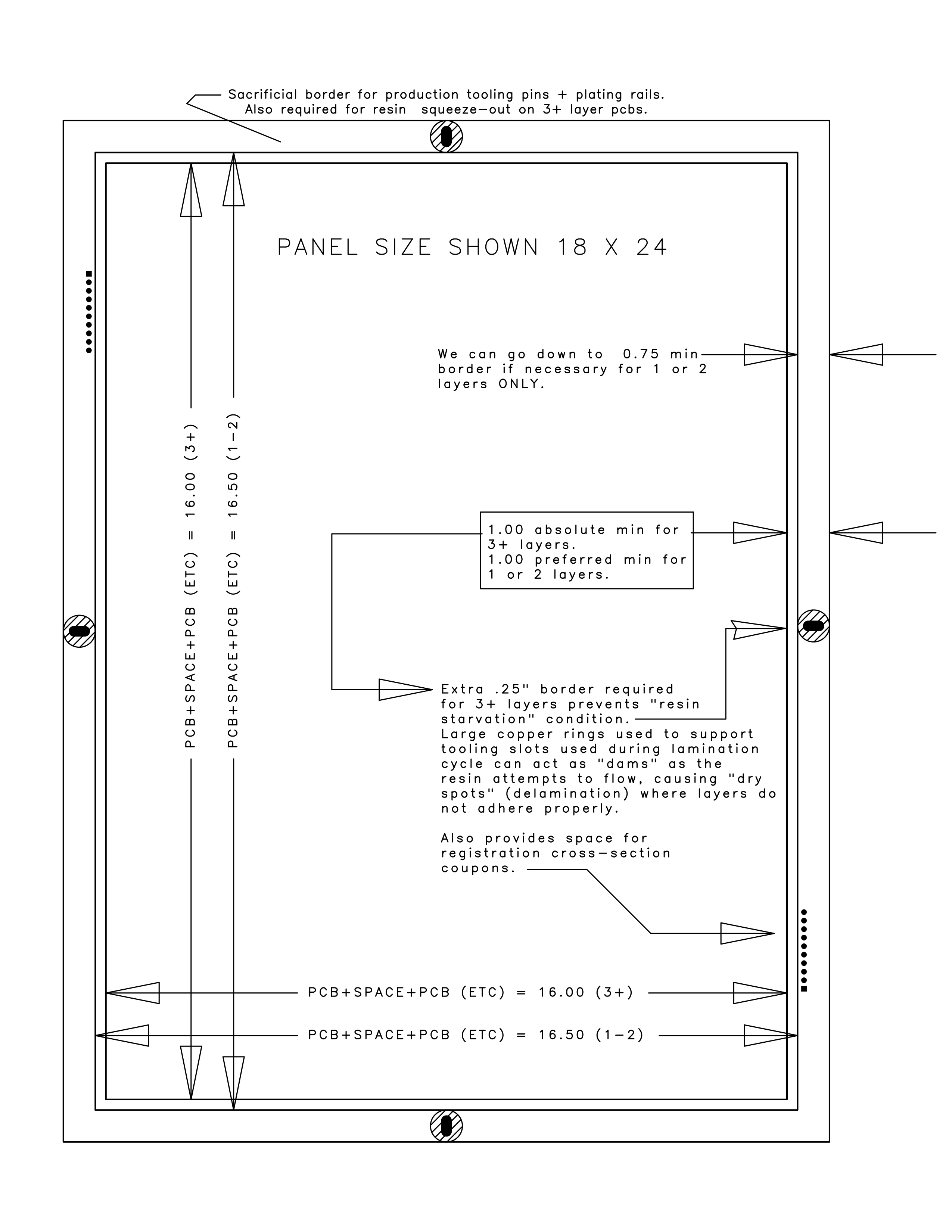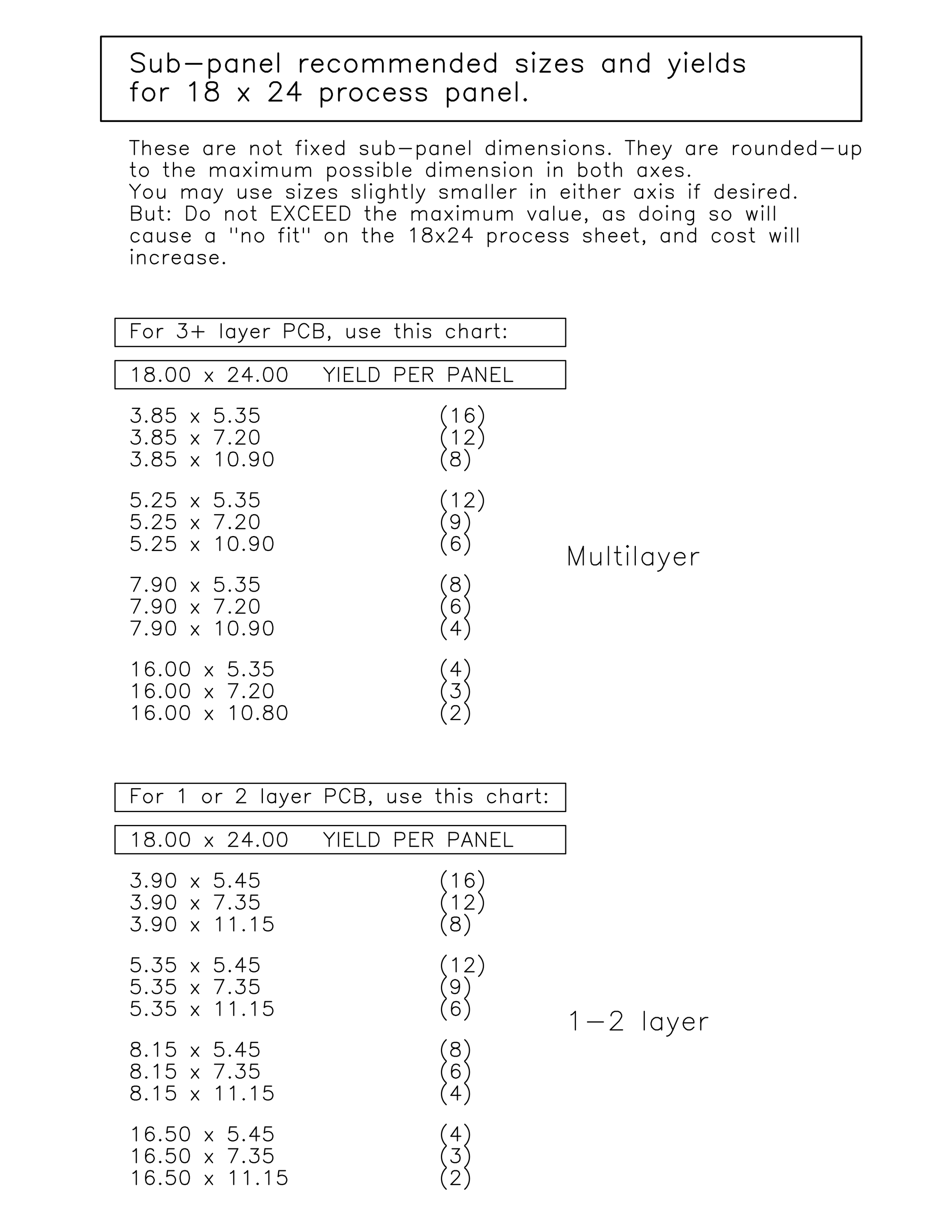PCB Laminate Utilization - Part and Panel Size:
In our first post on controlling PCB costs, we detailed many of the common cost drivers people face and ways to avoid them. For part 2 of controlling costs, we are focusing on one example that can cost a lot of dollars: PCB laminate costs and utilization
Printed circuit boards are run through the fabrication process in sheet form, typically with rows and columns of identical circuit boards or sub-panels on a single sheet, which are later cut out for shipment. One of the biggest potential cost adders in PCB manufacturing is that of a poor-yielding PCB or sub-panel. While this is true for even the least complex PCBs, it is especially true for multilayers.
As an example, if your fabricator can only fit two printed circuit boards per press cycle versus four printed circuit boards, your order will take twice as long to move through lamination. Aside from the up-front negative impact of the cost adder, this means a quick turn may not get through on schedule, or a large order may consume several shifts of lamination time before it can be drilled. To avoid creating such costly bottleneck situations, pay close attention to the size of both your PCB and your sub-panel.

Good-Yielding Sub-Panels for 18X24 Sheet Stock
It helps to understand that most PCB fabricators use machined metal plates in their lamination process. These plates are very costly, so typically a fabricator will stock just one or two standard sizes. In the USA, the most common size by far is 18x24, with some also employing 16x21 or 12x18 plates. You need to understand that whatever size PCB or sub-panel your fabricator will be shipping to you must make efficient use of material in this size.
Be aware also that the edges of the process sheet need to be left free, because they must be used for locating fabricator tooling hole patterns, test coupons, plating rails, etc. At the interior of the sheet,circuit boards which are not v-scored require that space be allocated for routing channels required to form the edges. It is therefore not a simple matter of creating a unit size that divides evenly into an 18x24 sheet. To more fully understand process sheet utilization, please refer to the included diagram.

8X24 Diagram with Margins Required for Processing
See our Controlling PCB Costs: Part 1 post here.
















